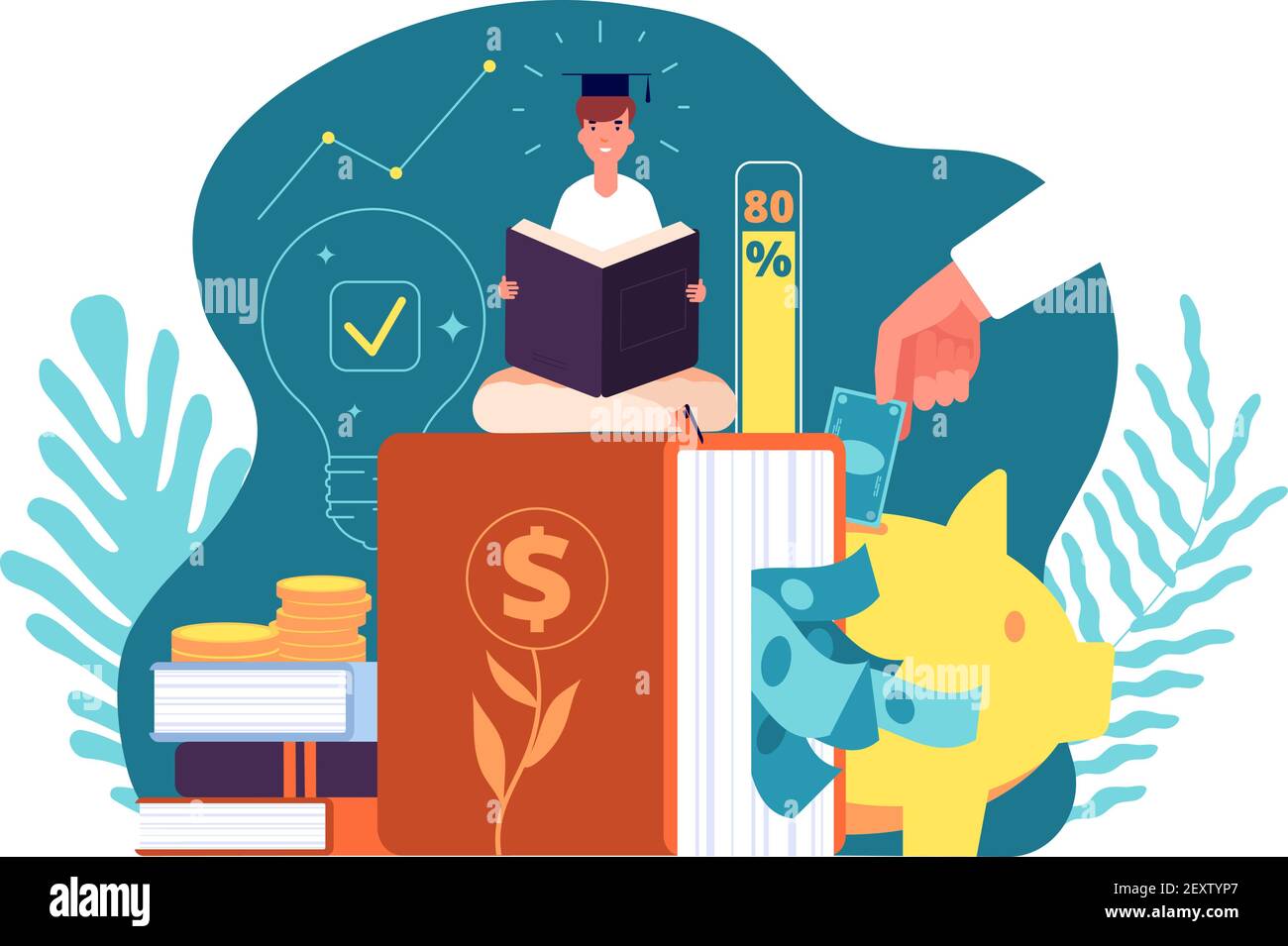Investing in Knowledge: Importance of Educational Loans

Putting resources into schooling is a significant stage toward individual and expert development. For some, this includes considering educational loans to finance their scholarly excursion. In this exhaustive aide, we’ll investigate the range of educational loans, from government choices to private other options. We should plunge into the complexities of qualification, application processes, loan costs, and reimbursement plans, guaranteeing you settle on informed conclusions about putting resources into information. Investing in Knowledge: Importance of Educational Loans
I. Introduction
A. Meaning of Educational Loans
Educational loans, regularly known as student loans, are monetary devices intended to assist people with taking care of the expenses of advanced education. These loans assume a vital part in giving admittance to scholastic open doors that could somehow be monetarily far off.
B. Importance of Investing in Knowledge
Understanding the meaning of putting resources into information makes way for investigating the different features of educational loans. Information is a resource that increases in value after some time, contributing not exclusively to self-awareness yet additionally to long haul vocation achievement. Investing in Knowledge: Understanding the Spectrum of Educational Loans
II. Types of Educational Loans
A. Government Student Loans
- Financed Loans
Financed government loans accompany special advantages, including interest appropriations during specific periods, making them an alluring choice for qualified students. - Unsubsidized Loans
Unsubsidized government loans, however not without interest, offer adaptability in getting sums and are open to a more extensive scope of students.
B. Private Student Loans
- Fixed-Rate Loans
Confidential fixed-rate loans give soundness in reimbursements, as the financing cost stays steady all through the credit term. - Variable-Rate Loans
On the other hand, factor rate private loans might offer lower starting financing costs, however the rates can change over the long run, representing an alternate arrangement of contemplations for borrowers. Investing in Knowledge: Importance of Educational Loans
III. Eligibility Criteria
A. Government Advance Qualification
Deciding qualification for government loans includes factors like monetary need, enlistment status, and citizenship.
B. Confidential Credit Qualification
Confidential loan specialists frequently think about financial record and pay, and some might require a co-underwriter for candidates with restricted reliability.
C. Co-Underwriter Prerequisites
Understanding the co-underwriter’s job is fundamental, as it can influence both qualification and loan fees for private loans. Investing in Knowledge: Understanding the Spectrum of Educational Loans
IV. Application Process
A. FAFSA for Government Loans
Finishing the Free Application for Government Student Help (FAFSA) is a critical stage in getting bureaucratic monetary guide, including loans.
B. Confidential Advance Application Steps
Confidential advance applications fluctuate by bank however by and large include a credit check, accommodation of monetary records, and endorsement processes.
V. Interest Rates and Repayment Plans
A. Government Advance Financing costs
Administrative credit financing costs are set by the public authority and may shift in light of the advance kind.
B. Confidential Advance Financing costs
Confidential loans offer both fixed and variable financing costs, each with its own contemplations for borrowers. Investing in Knowledge: Understanding the Spectrum of Educational Loans
C. Reimbursement Plans Outline
Understanding government pay driven reimbursement plans and confidential credit reimbursement choices assists borrowers with pursuing informed decisions lined up with their monetary conditions.
VI. Pros and Cons of Educational Loans
A. Benefits
- Admittance to Advanced education
Educational loans make ready for people to seek after advanced education, opening ways to more readily vocation amazing open doors. - Potential Tax breaks
Certain educational loans offer tax reductions, giving extra monetary impetuses to borrowers.
B. Inconveniences
- Amassing Interest
One critical disadvantage is the aggregation of interest, which might prompt higher by and large reimbursement sums. - Influence On layaway Score
Opportune reimbursement is pivotal, as missed installments can adversely influence a borrower’s FICO rating.
VII. Tips for Responsible Borrowing
A. Borrowing Only What’s Necessary
Mindful acquiring includes surveying genuine monetary requirements and getting just the vital sum.
B. Understanding Advance Terms
Complete comprehension of advance terms, including loan costs and reimbursement plans, is fundamental for informed independent direction. Investing in Knowledge: Understanding the Spectrum of Educational Loans
C. Planning for Reimbursement
Making a spending plan that obliges credit reimbursements guarantees monetary solidness during and after the scholastic excursion.
VIII. Loan Forgiveness and Repayment Assistance Programs
A. Public Service Loan Forgiveness
For those seeking after vocations in broad daylight administration, the Public Help Credit Pardoning program offers a pathway to obligation alleviation.
B. Pay Driven Reimbursement Plans
Government pay driven reimbursement plans change regularly scheduled installments in light of pay, giving adaptability to borrowers confronting monetary difficulties.
C. Manager Based Reimbursement Help
A few managers offer reimbursement help programs as a component of their worker benefits, further supporting the reimbursement cycle.
IX. Conclusion
A. Recap of Central issues
Checking on the essential viewpoints covered, from credit types to mindful getting tips, for a thorough comprehension.
B. Support for Informed Navigation
Empowering perusers to pursue informed choices with respect to educational loans, taking into account their exceptional conditions and desires.



